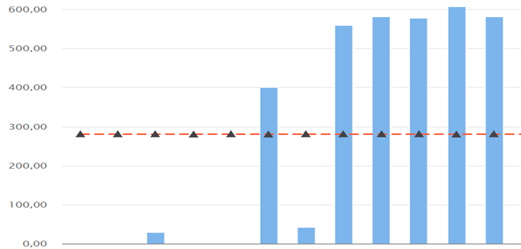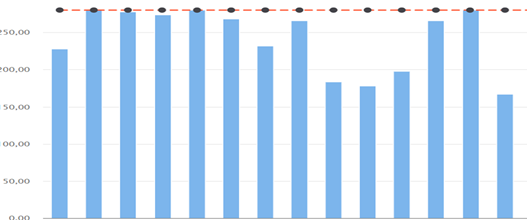Supply chain professionals regularly experience stressful periods. If you work in cosmetics, it's Christmas, Valentine's Day, Mother's Day, Black Friday, etc. If you're a chocolatier, it's Easter and Christmas. If you work in consumer goods, it's Black Friday. If you're a supplier in industry, watch out for Chinese New Year, which comes around unexpectedly at the start of the year!
Pull flow: responding to actual demand?
At Demand Driven Technologies, we are passionate about pull flow, because acting on the basis of actual demand is more reliable than making bets by basing decisions on forecasts.
However, when it comes to major events that take place over a short period of time, there's no secret: you have to anticipate and therefore make decisions about sourcing, manufacturing, and storage based on forecasts.
You can't source or manufacture the quantities for Black Friday the day before. Depending on your lead times and end-of-year transportation constraints, you may need to anticipate Chinese New Year as early as the previous summer.
During your S&OP process, you will therefore define a forecast demand scenario, which you will gradually refine as the event approaches, based on actual demand signals that you will pick up from the market, for example, orders for stock replenishment from store networks.
Smoothing the increase in inventory
Traditional MRP systems generally do not have an effective mechanism for smoothing inventory build-up ahead of a planned event. If, in anticipation of Chinese New Year, you set up a supplier closure in your ERP, the MRP calculation will require the supplier to ship the entire quantity required for this period on the day before the closure. This is unlikely to be compatible with the supplier's capabilities – and at the time of shipment, there will probably be no room on the vessels.
The same applies to your Christmas sales rush. If you upload your sales forecasts for November/December, it is up to you to establish a master production schedule to smooth things out in advance, considering your manufacturing and supply capacity.
Anticipate while remaining agile
Combining anticipation based on forecasts with pull techniques seems contradictory.
We have multiple objectives:
- Smooth the load in order to build up inventory gradually, taking into account the uncertainties that are bound to arise along the way.
- Adapt if the actual demand for items contributing to inventory differs from forecasts during this inventory build-up period.
- Ensuring that the performance measures of planners and managers are aligned with these anticipatory decisions.
- Clearly visualize the health of inventory build-up—are we on track?
- Enable adaptation of the trajectory through scenario management in the S&OP process.
To do this, we will implement a few techniques in Intuiflow:
- Project stock buffer adjustments based on forecasts or historical/forecast mixes.
- Use a finite capacity RCCP projection to define the gradual stock build-up plan.
- Reflect this anticipation via yellow zone adjustment factors (e.g., via a gradual increase in the reorder point).
- Leverage multiple S&OP scenarios to facilitate adaptation.
Let's look at a few examples
The item below is sourced in China. We project based on consumption forecasts, taking into account supplier closure. We anticipate a problem in March 2026 if we do nothing.

We ask Intuiflow to mitigate this risk, which leads to an increase in the order point (top of the yellow zone) starting in October.

This scenario is considered in S&OP, and the planner will only have to respect the adjusted reorder point, without switching to open loop for an excess order. This view will be adapted as actual demand evolves.
Another example: the graph below shows the load that would need to be met to satisfy a one-off promotional demand.

This load is automatically smoothed upstream to match our capacities.

Smoothing results in a gradual increase in the yellow area so as to comply with capacities while ensuring the desired anticipation.
In summary
While you should base your operations as much as possible on actual demand, when major predictable events occur, you need to take risks/make bets based on forecasts.
Your capacity limits and lead time will determine how long in advance you need to start betting – the later the better.
This does not prevent you from benefiting from pull flow tactics before, during, and after the event—by promoting visual management and adapting to actual demand within the limits of replenishment response times.